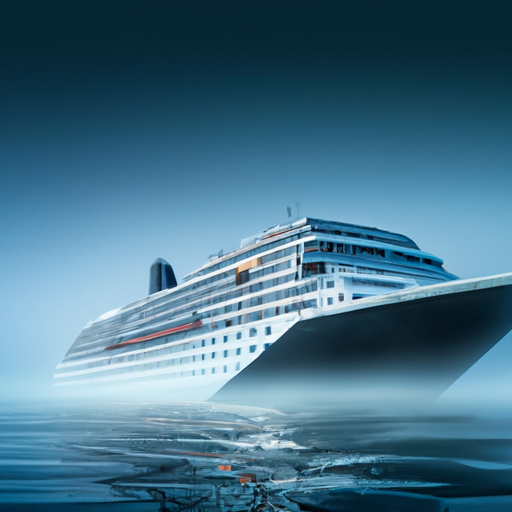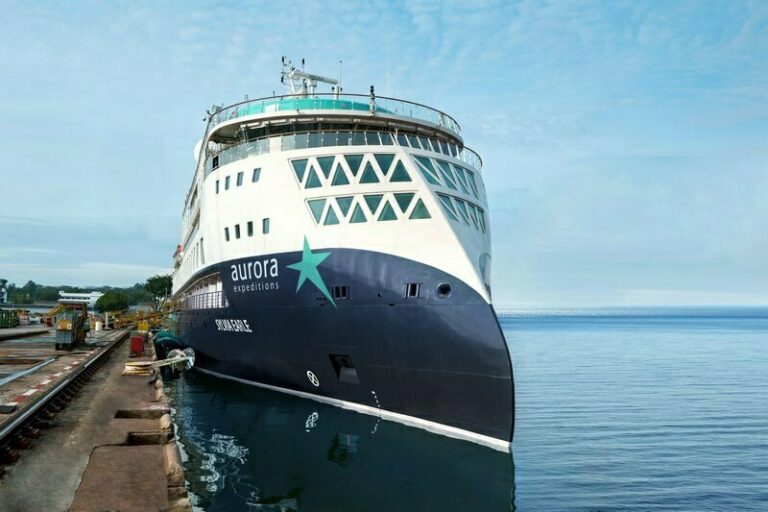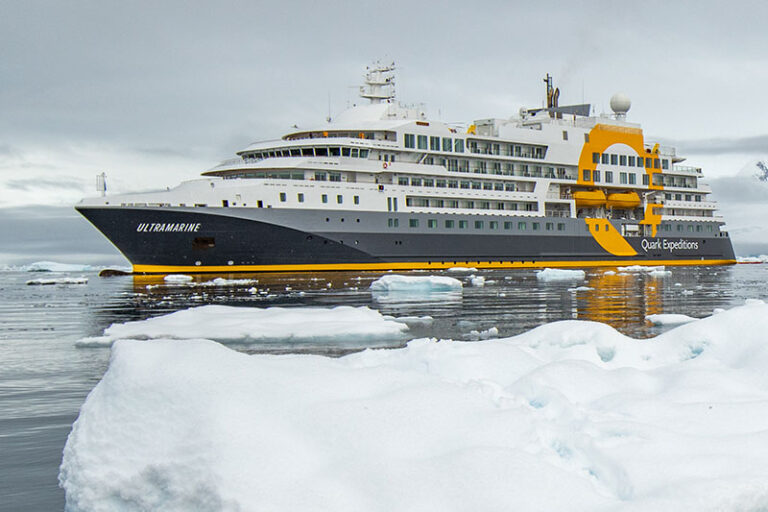The Dark Side Of Cruising: What They’re Not Telling You
Picture yourself lounging on a sun-soaked deck, sipping a colorful cocktail, as the ocean breeze gently caresses your face. Ah, the allure of a luxurious cruise vacation: the epitome of relaxation and escape. But what if I told you that beneath the glitz and glamour lies a sinister side, a world shrouded in secrecy and hidden dangers? “The Dark Side of Cruising: What They’re Not Telling You” unveils the untold stories, revealing the underbelly of the cruise industry that will make you reconsider that dreamy getaway. Brace yourself for a shocking journey behind the curtain, as we expose the hidden truths and navigate the treacherous waters of cruise tourism.

Cruise Ship Safety
Cruise ship safety is a critical concern that should not be taken lightly. While cruising can provide a fun and enjoyable experience, it’s important to be aware of the vulnerabilities that exist on these giant floating resorts. Incidents of crime on board have been reported, including theft, assault, and even sexual harassment. These incidents highlight the need for tighter security measures and increased awareness among passengers.
Incidents of Crime on Board
When you board a cruise ship, you expect a safe and secure environment. However, there have been instances where crimes have occurred on board, leaving passengers feeling vulnerable. Theft is one of the most common crimes reported, with valuable belongings going missing from cabins and public areas. Assault and sexual harassment are also concerns on cruise ships, with incidents happening in close quarters and potentially unmonitored spaces. cruise lines must prioritize passenger safety and take proactive steps to prevent such incidents from happening.
Legal Issues and Loopholes
Navigating the legal landscape on cruise ships can be a complicated endeavor. One major concern is the jurisdiction issue. When a crime occurs on board, it’s often unclear which laws apply and which authorities have jurisdiction to investigate and prosecute. This creates a legal loophole that can lead to cases going unresolved or victims being denied justice. Additionally, there have been cases where cruise lines have faced lawsuits relating to negligence, inadequate safety measures, and even environmental damage. It’s crucial for passengers to be aware of their rights and the potential legal complications involved in cruising.
Environmental Impact
Cruise ships have long been criticized for their environmental impact, particularly in terms of pollution. These massive floating cities generate a significant amount of waste, including sewage and food waste, which can have severe consequences for marine ecosystems. The discharge of untreated sewage and wastewater can introduce harmful substances into the ocean, posing a threat to marine life and the delicate balance of marine ecosystems.
Pollution from Cruise Ships
The air pollution caused by cruise ships is another major concern. These vessels run on heavy fuel oil, one of the dirtiest fuels available, which releases sulfur oxide and nitrogen oxide emissions. These emissions contribute to air pollution and can have detrimental effects on both human health and the environment. Additionally, cruise ships can produce large amounts of solid waste, including plastics and other non-biodegradable materials, further contributing to pollution.
Waste and Sewage Management
The management of waste and sewage on cruise ships is a crucial aspect that needs improvement. These ships can produce a massive volume of waste, and the disposal of this waste must be handled responsibly. However, there have been instances of illegal dumping, where cruise lines have been found to dispose of waste improperly, endangering marine life and polluting the ocean. Better waste management practices, including recycling and responsible disposal, are necessary to mitigate the environmental impact of cruise ships.
Damage to Marine Ecosystems
The negative impact of cruise ships on marine ecosystems cannot be ignored. The constant flow of tourists and their activities can disrupt and damage delicate ecosystems, such as coral reefs and seagrass beds. Anchoring and dredging can cause physical damage to these habitats, while excess nutrients from onboard waste can lead to harmful algal blooms. Cruise lines must take responsibility for protecting these fragile environments by implementing sustainable practices and prioritizing the preservation of marine ecosystems.
Crew Working Conditions
While passengers enjoy their cruise experience, it’s important to consider the working conditions of the crew members who make it all possible. Many crew members work extremely long hours, often without adequate rest periods. These long hours can lead to fatigue and exhaustion, potentially compromising safety on board. Moreover, crew members are often paid low wages and can face exploitation, with limited options for redress. These issues raise serious concerns regarding the treatment and wellbeing of those who work behind the scenes to ensure a pleasant experience for passengers.
Long Working Hours
cruise ship crew members often work long hours, with shifts that can extend well beyond the standard eight hours. This can lead to physical and mental fatigue, impairing their ability to perform their duties effectively and compromising the safety of passengers. Despite industry regulations that aim to limit working hours, reports of extended shifts and lack of adequate rest periods are not uncommon. Cruise lines must prioritize the wellbeing of their crew members by enforcing reasonable working hours and providing sufficient time for rest and recuperation.
Low Wages and Exploitation
Cruise ship crew members are typically paid low wages, often below the minimum wage of the country in which the ship is registered. This discrepancy raises concerns about fair compensation and the potential for exploitation. Additionally, crew members may face unfair treatment, including long-term contracts with limited rights and minimal job security. These exploitative practices underscore the need for stronger regulations and better protection for the rights and welfare of cruise ship workers.

Lack of Medical Facilities
Another issue that can impact the health and safety of crew members is the lack of adequate medical facilities on board. While passengers have access to medical services and facilities, crew members often have limited options for medical care. This can result in delayed or inadequate treatment for injuries or illnesses, putting their health at risk. Cruise lines must ensure that crew members have access to proper medical facilities and healthcare services to prioritize their wellbeing.
Health and Hygiene Concerns
Cruise ships are notorious for outbreaks of illnesses and diseases, which can quickly spread due to the close proximity of passengers and crew members. Norovirus and other contagious infections are common onboard, causing gastrointestinal issues and impacting the overall cruising experience. Limited medical resources on board can further complicate the management of these outbreaks, potentially putting the health and well-being of passengers and crew members at risk.
Outbreaks of Illnesses and Diseases
Outbreaks of illnesses and diseases, such as norovirus, are a significant concern on cruise ships. These highly contagious infections can spread rapidly in the close quarters of the ship, leading to widespread illness among passengers and crew members. The confined environment, combined with the constant turnover of passengers, makes it challenging to contain and manage these outbreaks effectively. Cruise lines must prioritize hygiene and implement robust preventive measures to minimize the risk of outbreaks and protect the health of everyone on board.
Limited Medical Resources on Board
When it comes to medical emergencies on a cruise ship, access to prompt and adequate medical care is crucial. However, the availability of medical resources on board can be limited. Some ships may have only basic medical facilities, with a small number of doctors and nurses to attend to a large number of passengers and crew members. In cases of serious medical emergencies, such as heart attacks or strokes, the lack of specialized equipment or expertise can have severe consequences. Cruise lines must invest in comprehensive medical facilities onboard to ensure the safety and well-being of their passengers and staff.
Hidden Costs
Cruising often comes with its fair share of hidden costs, which can quickly add up and make the overall experience more expensive than initially anticipated. Additional fees and charges, such as gratuities, port taxes, and service charges, can significantly increase the total cost of a cruise. Furthermore, onboard activities and amenities often come at an extra cost, making it challenging for passengers to fully enjoy their cruise without incurring additional expenses. The high cost of shore excursions is another factor to consider, as these organized activities can be significantly more expensive when booked through the cruise line.

Additional Fees and Charges
When booking a cruise, it’s essential to be aware of the additional fees and charges that may come with it. Gratuity charges are often automatically added to your onboard account, which can add a considerable amount to your final bill. Port taxes and fees are another expense that may not be included in the initial price, making it important to budget accordingly. Additionally, some cruise lines charge service fees for beverages, specialty restaurants, and other amenities, further increasing the cost of the cruise. Passengers should carefully review the terms and conditions to understand the full extent of these additional charges.
Expensive Onboard Activities
While cruising offers a wealth of onboard activities, many of them come with an additional cost. From specialty dining experiences to spa treatments and fitness classes, passengers may find themselves spending more money to indulge in these activities. Onboard shops, casinos, and entertainment venues also add to the expenses, as they often entice passengers with their offerings. It’s important to set a budget for onboard activities and prioritize experiences within your means to avoid overspending.
High Cost of Shore Excursions
Shore excursions are a popular way to explore the destinations visited during a cruise. However, these organized trips can be quite expensive when booked through the cruise line. Passengers often face limited options or packages that are priced higher than what they would pay if they independently arranged their own activities. While the convenience and peace of mind that come with booking through the cruise line can be appealing, it’s worth considering alternative options to save money and have a more personalized experience.
Overcrowding and Limited Space
One of the downsides of cruising is the potential for overcrowding, particularly during peak travel seasons. With a large number of passengers on board, public areas can quickly become crowded, making it challenging to find a quiet spot to relax. Amenities and facilities, such as pools, spas, and theaters, can also become overcrowded, leading to longer wait times and a diminished experience. It’s important to consider the size of the ship and the number of passengers when planning a cruise to ensure a comfortable and enjoyable experience.
Large Number of Passengers
Cruise ships can accommodate thousands of passengers, creating an environment that can feel crowded and overwhelming. During peak travel seasons or on popular itineraries, ships can operate at maximum capacity, leading to overcrowding in public areas. The sheer number of people onboard can result in longer wait times for dining, boarding and disembarking, and accessing onboard amenities. Passengers who prefer a more relaxed and uncrowded experience may want to consider traveling during off-peak periods or choosing smaller ships with fewer passengers.

Limited Public Areas
While modern cruise ships are designed to offer a wide range of amenities, the available public areas can still feel limited when thousands of passengers are vying for space. Sun decks, lounges, and entertainment venues can quickly fill up, leaving passengers searching for a place to relax or enjoy the onboard activities. It’s important to plan your time wisely and be prepared for potentially crowded public areas, especially during peak travel times.
Crowded Amenities and Facilities
Amenities and facilities on cruise ships, such as pools, spas, and theaters, can become crowded during peak times. This can result in longer wait times and reduced availability, affecting the overall experience. Passengers may find themselves having to wait for a lounger by the pool or struggling to secure a reservation at the ship’s specialty restaurants. It’s advisable to plan ahead, make reservations when possible, and be flexible with timing to avoid disappointment and frustration.
Food Safety and Quality
Food is undeniably an integral part of the cruising experience, and passengers expect high standards of food safety and quality. However, there have been instances of foodborne illnesses occurring on cruise ships, including outbreaks of norovirus. Contamination and poor hygiene practices can lead to illness among passengers and crew members, causing discomfort and potentially ruining the vacation experience. Additionally, limited options for dietary preferences, such as vegetarian or gluten-free meals, can be a challenge for passengers with specific dietary needs.
Foodborne Illnesses
Outbreaks of foodborne illnesses, such as norovirus, can occur on cruise ships due to the close quarters and shared dining areas. The highly contagious nature of these infections can lead to widespread illness among passengers and crew members. While cruise lines have implemented protocols to prevent and manage these outbreaks, instances can still occur. It’s crucial for passengers to practice good hygiene, such as frequent handwashing, and follow any guidelines provided by the ship’s crew to minimize the risk of contracting a foodborne illness.
Contamination and Poor Hygiene Practices
Contamination and poor hygiene practices can contribute to the spread of foodborne illnesses on cruise ships. Improper food handling and storage, inadequate cleaning, and failure to follow food safety protocols can all put passengers at risk. Cruise lines must ensure that their onboard culinary teams receive comprehensive training in food safety and adhere to strict sanitation standards. Passengers should also be vigilant and report any concerns regarding food hygiene to the ship’s staff.

Lack of Variety for Dietary Preferences
Cruise lines have made significant progress in catering to various dietary preferences and restrictions. However, passengers with specific dietary needs, such as vegetarian, vegan, or gluten-free diets, may still encounter limited options. While most cruise lines are willing to accommodate these requests, the variety and quality of meals for specific dietary preferences can vary. Passengers with dietary restrictions should communicate their needs in advance to ensure that suitable options are available during their cruise.
Inconvenient Travel Restrictions
Travel restrictions are an unfortunate reality of the cruising experience, with long waiting times for port entry and stringent security checks being common occurrences. These inconveniences can lead to frustration and wasted time, particularly when passengers have limited time in each port. Additionally, cruise itineraries can be inflexible, making it challenging to make changes or adjustments to accommodate unforeseen circumstances.
Long Waiting Times for Port Entry
When arriving at a port of call, passengers often look forward to exploring the destination. However, long waiting times for port entry can significantly impact the time available to go ashore. Immigration and customs procedures may involve lines and delays, particularly when multiple cruise ships arrive simultaneously or when visiting countries with strict entry requirements. Passengers should be prepared for potential queues and factor in the wait times when planning their activities ashore.
Stringent Security Checks
Cruise ships are subject to stringent security checks, both before embarkation and when returning from shore excursions. These checks are essential for the safety and security of all passengers and crew members but can result in delays and inconvenience. Baggage and personal items may be subject to thorough inspections, and passengers may need to pass through metal detectors or undergo individual screenings. It’s important to allow ample time for these security checks to avoid the stress and potential delays that may arise.
Lack of Flexibility in Itinerary Changes
Cruise itineraries are carefully planned in advance, taking into account various factors such as weather conditions, port availability, and logistical considerations. However, unforeseen circumstances, such as inclement weather or port restrictions, can necessitate changes to the original itinerary. While cruise lines strive to provide alternate options or compensate passengers for missed ports, there is usually limited flexibility in making significant changes. Passengers should be prepared for the possibility of itinerary alterations and maintain a flexible mindset to avoid disappointment.
Poor Customer Service
Customer service is a crucial component of any vacation experience, and unfortunately, some cruise lines fall short in this aspect. Unresponsive staff who fail to address passenger concerns or resolve issues in a timely manner can lead to frustration and dissatisfaction. Language barriers can further complicate matters, as effective communication is essential for quick and accurate problem resolution. Additionally, the lack of accountability for issues can leave passengers feeling unheard and unsupported.
Unresponsive Staff
Prompt and responsive customer service is vital for a positive cruise experience. However, instances of unresponsive staff have been reported, where passenger concerns or complaints are not adequately addressed. This can be particularly frustrating when immediate action or assistance is required. Cruise lines must ensure that their staff members are well-trained in handling customer inquiries and that clear channels of communication are established to address and resolve issues efficiently.
Language Barriers
Cruise ships are often staffed with crew members from various countries, adding diversity to the onboard experience. However, language barriers can occasionally pose challenges in effective communication. Misunderstandings can impede problem resolution and hinder the delivery of quality customer service. While language training programs are usually in place, some passengers may encounter difficulties when communicating their needs or concerns. Patience and understanding from both passengers and staff are essential in overcoming these language barriers.
Lack of Accountability for Issues
When issues arise during a cruise, passengers expect a prompt response and a satisfactory resolution. However, there have been instances where cruise lines fail to take accountability for problems or provide appropriate compensation for the inconvenience caused. This lack of accountability can leave passengers feeling overlooked and dissatisfied with their overall experience. Cruise lines should establish transparent processes for addressing and resolving passenger issues, ensuring that passengers feel heard and supported throughout their journey.
Impacts on Local Communities
Cruise ships have a significant economic impact on the destinations they visit. However, there can be negative consequences for local communities, including disruptions to local economies, negative social and cultural influences, and increased strain on infrastructure. These impacts, if not properly managed, can degrade the authenticity and sustainability of the destinations.
Disruption of Local Economies
While cruise tourism can bring economic benefits to local communities, it can also disrupt local economies. The influx of tourists can lead to overcrowding and increased prices, making it challenging for locals to afford housing, goods, and services. Moreover, the focus on catering to tourists’ needs and preferences can result in the neglect of local businesses and artisans, leading to cultural homogenization and loss of traditional livelihoods. Sustainable tourism practices, such as supporting local businesses and promoting responsible visitor behavior, are essential in ensuring that cruise tourism benefits local economies without causing long-term harm.
Negative Social and Cultural Influences
Cruise tourism can have negative social and cultural influences on local communities. The rapid influx of tourists can sometimes lead to friction between visitors and locals, particularly when cultural norms and traditions are not respected. Behavior that may be acceptable or commonplace in a different context can be considered disrespectful or offensive, causing tension and strained relationships. Cruise lines must promote cultural sensitivity and educate passengers on local customs and etiquette to foster positive interactions with local communities.
Increased Strain on Infrastructure
The arrival of multiple cruise ships in a port can put a strain on the local infrastructure. Small towns and islands may not have the capacity to accommodate large numbers of tourists, leading to overcrowding and overburdened services. This can result in a diminished experience for both visitors and locals, as facilities become crowded and stretched thin. Cruise lines must work closely with local authorities to manage visitor flows and ensure that the necessary infrastructure is in place to handle the impact of cruise tourism sustainably.
As much as we may enjoy the glitz and glamour of a cruise vacation, it’s essential to recognize the potential drawbacks and impacts that come with it. From concerns about safety and security to environmental and social consequences, being informed allows us to make conscious choices when it comes to cruising. By raising awareness and encouraging responsible practices within the cruise industry, we can work towards a future where cruise vacations are not only enjoyable but also sustainable and respectful to the destinations and communities they visit.







